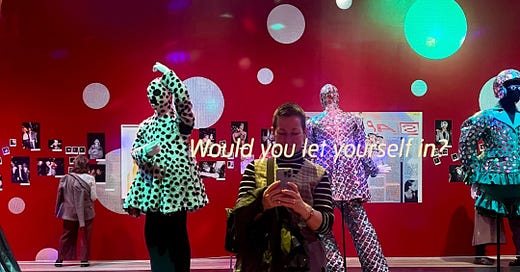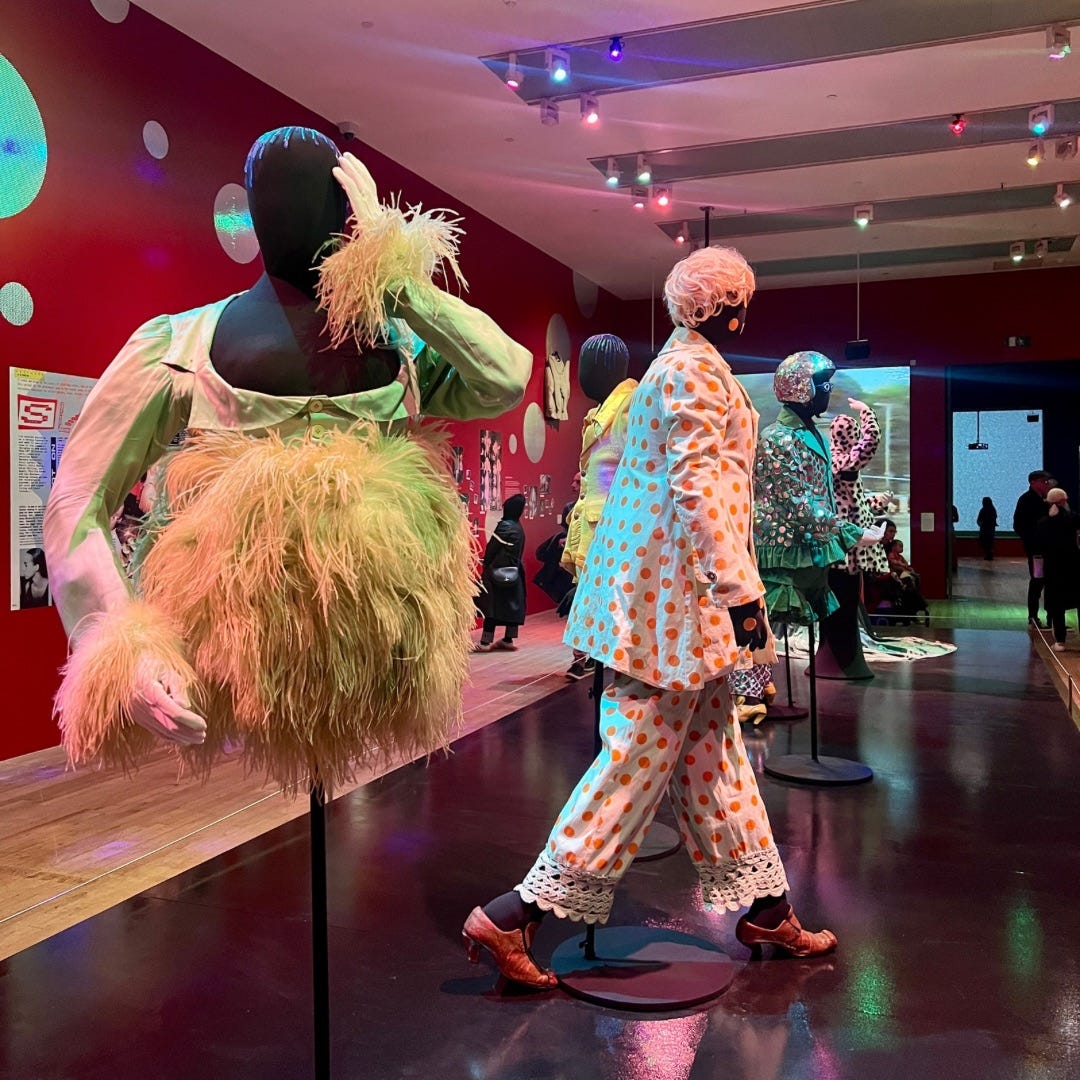Hi Lovely. Today I’d like to share something a little different with you. It isn’t about Ollie, animals, nature or any research related to the stories. It’s about an artist who used his body and clothing as an art form.
I was a teenager in the 1980s and my fondness for the culture, music and art of that decade has persisted throughout my life. It was a time where we enhanced our shoulders and hair, wore metallic blue eyeshadow, and dared to wear lace, flounces and frills. Music and fashion were everything and night clubs were the place to experience both. So, when the Leigh Bowery exhibition opened at Tate Modern in London at the end of February I just had to visit.
In London’s Leicester Square in 1985 a subculture club opened. It was called Taboo (because nothing there was) and became a place of hedonistic, polysexual debauchery. The ethos was ‘dress as though your life depends on it, or don’t bother.’ Legend has it that a mirror would be held up to you at the door with the words ‘would you let yourself in?’ written on it. Taboo stayed open for 18 months and was closed at the height of its popularity following allegations of drug use and solicitation. And of course this helped cement its legend.
Taboo was where Leigh Bowery could be found. A six foot three, seventeen stone Australian described as a performance genius, a club legend, a model, a fashion designer and a musician, amongst other things. He was mostly known for his outrageous outfits and his face paint. Boy George said of him ‘he was like a walking piece of art constantly reinventing himself. He was the ultimate expression of individuality. His fashion was his way of expressing his queerness to the world.’
It’s particularly interesting to me that this quote comes from a man who played a pivotal role in opening both my own and my school friends eyes to the concept of gender fluidity. I can still remember the first time Culture Club played on prime time TV. They performed ‘Do you really want to hurt me’ on Top of the Pops in 1982. There was a huge debate at school the next day about whether the lead singer was male or female. There was some outrage from parents about it (thankfully not mine). It might sound strange in these more fluid and accepting times but this was the first exposure to the concept of androgeny that myself and my pals had experienced.
Like Grace Jones was also doing in New York at the time, when she was ‘feeling like a woman, looking like a man’, and having her toned body painted by Keith Haring, Bowery was using his own body as sculpture. But with more sequins, more pale and wobbly flesh, more humour perhaps and far less taste. The Tate say in their exhibition notes that he ‘celebrated the body as a shape-shifting tool with the power to challenge norms of aesthetics, sexuality and gender.’
Keep reading with a 7-day free trial
Subscribe to Ollie Pops Doodle Dog to keep reading this post and get 7 days of free access to the full post archives.






